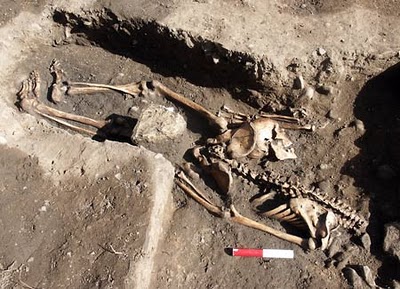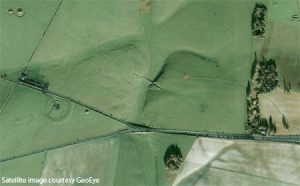A video depicting the damage done to the Parthenon over the centuries on display at the new Acropolis Museum was censored following protests by the Greek Orthodox Church. The fragment from a film by Costa-Gravas gives an overview of the ‘vandalism’ to the Parthenon starting at the Germanic warriors in 267 ADto the removal of a large part of the freize by British diplomat Lord Elgin in the 19th century. As such, it also contains a scene from the early Byzantine period showing figures clad in black climbing up ladders and destroying part of the Parthenon frieze. Some damage was done, but the Parthenon was spared from total destruction by being converted into a church as a whole, rather than seeing it’s individual stones transported away.
Greek Orthodox Church disagrees with the Parthenon’s history
The original video fragment showing black-clad monks destroying parts of the Parthenon.
But Church officials contended the film misrepresented the attitude of the Greek Orthodox Church toward Greeces ancient heritage, and the disputed scene was cut out of the documentary.
Museum director Dimitris Pantermalis acknowledged the Greek Churchs displeasure and, while he tried to minimize the importance of the episode, appeared irritated at those who objected.: “The segment that was cut was no more than 12 seconds long and the accompanying narration has been left intact,” he told the Associated Press. “The film depicted a historical fact – that some early Christians destroyed, or tried to destroy, ancient monuments, and this fact remains. I cannot understand those who said that (in) showing figures clad in black robes, we depicted priests. Thats what people were wearing in the Byzantine period, not trousers,” he said. Pantermalis later released a statement defending the cuts in the film as “an effort to eliminate misunderstanding and not censorship at all.”
Neil McGregor on the Elgin Marbles: The Greek did it too!
In the mean while, some self-applied censorship might not have harmed Neil McGregor, director of the British Museum. Talking to the director of the Tate Modern, Nicholas Serota at a public lecture organised by the London School of Economics and Political Science (watch the recordings), he stated that the removal of the marbles from the Parthenon was perfectly legal (?) and that the Greek government simply continued Elgin’s practice. When the moderator asked if MacGregor never has a quiet, niggling feeling that maybe the British Museum should not have them [the Elgin Marbles] when walking in the Parthenon galleries, MacGregor answered:
“No. The key question, if you want to take that address, is: Was it proper for them to be removed from the Parthenon and from Athens? Well, there’s no question it was legal because you can’t move those things without the approval of the power of the day. It was clearly allowed, or it it wouldn’t have happened.“
“The Greek government has simply continued Elgin’s practice [!?!] and removed the rest [of the Parthenon Marbles] now from the building, because you can’t see them on the building. When those sculptures came to London, for the first time they were at a height where people could see them and they were in a place where tens, hundreds of thousands of people could see these were great objects. That’s part of the purpose of a great museum to enable huge numbers of people to examine closely things that they wouldn’t otherwise have been able to examine closely.” (Transcript by CultureGrrl)
This is quite a harsh statement, especially as the majority of British citizens think the Elgin Marbles should return from their ‘enforced exile‘ in Britain and join their siblings in the niches carefully prepared for them at the new Acropolis Museum in Greece.



